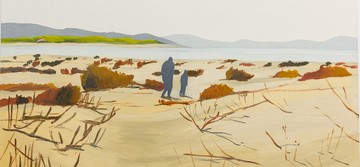Alexandra Christou (1950 – 2009)
A self-taught painter, Alexandra Christou (1950 – 2009) developed a distinctive visual language that remained largely unseen during her lifetime. Living for extended periods in the United States, Australia, and Germany before settling between Athens and the Aegean island of Astypalaia in 1987, she absorbed diverse cultural influences while cultivating an intensely personal, expressive style. Christou’s portraits draw on the textures of everyday life—cafés, domestic interiors, island rituals—blending myth, memory, and lived experience. Her protagonists – men in cafés, beggars, sex workers, friends, lovers, and alter-egos – appear as everyday heroes in dreamlike scenes that blur fact and fiction. Surreal symbolism and self-referential gestures lend the work both tenderness and quiet resistance, exploring companionship, solitude, and the subtle performances of daily existence. Despite limited exposure during her career, Christou exhibited at the Benaki Museum in Athens and the Institute for Graphic Arts & Painting in Marburg, Germany, leaving behind a quietly
powerful legacy that continues to resonate. Public Secrets, curated by Milovan Farronato at The Breeder in the summer of 2025, brought renewed attention to key canvases from the early-to-late 1990s. Works such as Alexandra as Tightrope Walker between Athens and Astypalaia (1992), A with Loves of Her Life (1995), and Portrait A. with Aris Circus (1998) reveal autobiographical layers in which personal myth and everyday encounters merge. Charged with private meaning yet resonant with broader late-20th-century Greek life, Christou’s paintings stand as vivid visual diaries—testaments to resilience, marginality, and the enduring poetry of ordinary people and places.

oil on canvas, 150 x 120 cm
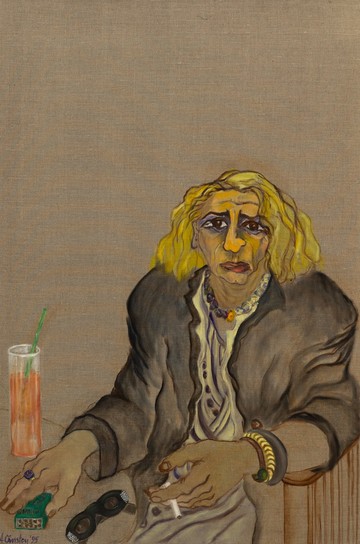
oil on canvas, 135 x 90 cm
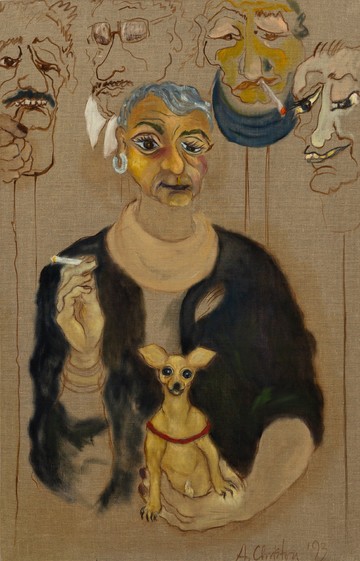
oil on canvas, 125 x 80 cm
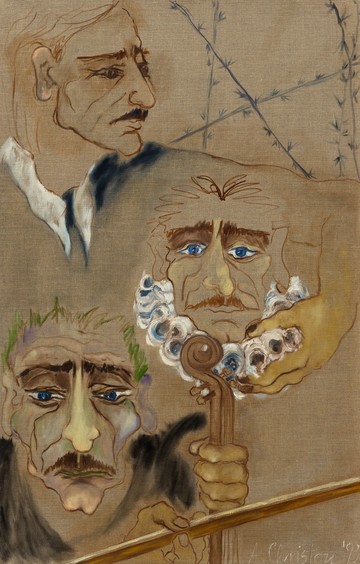
oil on canvas, 125 x 80 cm.
Andreas Lolis (b. 1970)
Over the past several years, Andreas Lolis has developed a body of work that scrupulously mimics the appearance of everyday packing and shipping materials—cardboard boxes, wooden pallets, plastic sheets, sacks—objects that seem worn, torn, or discarded. Only on closer inspection do viewers realize that these are not found items but meticulously carved sculptures in marble.
Lolis’ practice engages the paradox of using a material steeped in classical Greek heritage to replicate the most disposable products of contemporary consumer culture. The irony recalls Jasper Johns’ Ale Cans (1960) as well as later trompe-l’oeil practices by Robert Gober or Fischli & Weiss, yet Lolis’ work is uniquely tied to questions of materialism, labor, and value. By devoting artisanal skill and time to hand-carve what are typically machine-made throwaways, he reverses Duchamp’s gesture of the readymade: here, mass-produced objects are re-entered into art through the language of sculpture and craft. His works offer both delight in their virtuosic execution and a sober reflection on the waste, excess, and fetishism of contemporary consumer society.
Andreas Lolis studied at the Athens School of Fine Arts (2002) and the Carrara Academy of Fine Arts (2005), and taught at the Salzburg International Summer Academy of Fine Arts (2016–2018). His work has been shown widely, including Behind the Theatre, Eleusis 2023 European Capital of Culture; May You Live in Interesting Times, 58th Venice Biennale (2019); Prosaic Origins, NEON City Project (2018); Andidoron, documenta 14, Kassel; The Garden Sees, Athens Concert Hall; Thessaloniki Biennale (2017); 7th Beijing Biennial (2017); 13th Biennale de Lyon (2015); Hell As Pavilion, Palais de Tokyo, Paris (2013); and Monodrome, 3rd Athens Biennale (2011).

hand carved marble, 50 x 35 x 20 cm / 50 x 35 x 20 cm
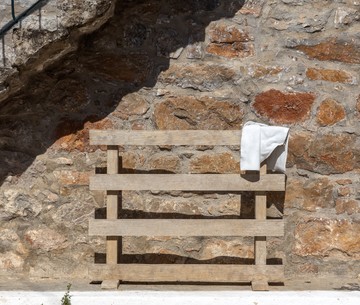
hand carved marble, 120 x 100 x 10 cm
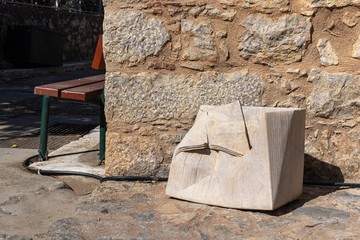
hand carved marble, 55 x 40 x 32 cm
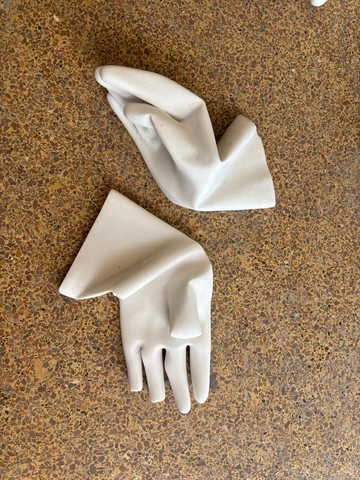
hand carved marble in two parts
Natsuko Kiura (b. 1985)
Natsuko Kiura’s paintings seek to capture the memory of a memory, distilling fleeting impressions of landscapes into luminous, pared-down compositions. Beginning with her own photographs of everyday scenes—a beach, a stretch of rolling hills, a roadside view—Kiura gradually removes detail, reducing each image to its emotional essence. What remains is not a faithful depiction but a translation of sensation: a landscape as remembered, reimagined, and transfigured.
Her works oscillate between objectivity and subjectivity, balancing the factual record of the camera with the personal resonance of painting. Figures are absent or dissolve into their surroundings, leaving nature to unfold in restrained, precise brushstrokes and a soft palette of colors. The resulting canvases evoke nostalgia and solitude, while paradoxically inviting viewers to project their own feelings and recollections onto anonymous, universal places. In Kiura’s work, separation itself becomes a point of connection—an unlikely space of shared community.
Kiura lives and works in Kagoshima, Japan. She received her MFA from Onomichi City University in Art & Design. She has exhibited widely in Japan, including group exhibitions at the National Art Centre, Tokyo (2023); Hiroshima City Museum of Contemporary Art (2023); and Ueno Royal Museum, Tokyo (2022). Solo exhibitions include Takashi Someiya Gallery, Tokyo (2022); Kagoshima City Museum of Art (2021); and most recently The Breeder, Athens (2024).
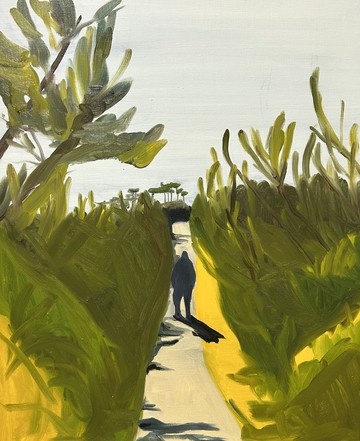
oil on canvas, 60.6 x 50 cm
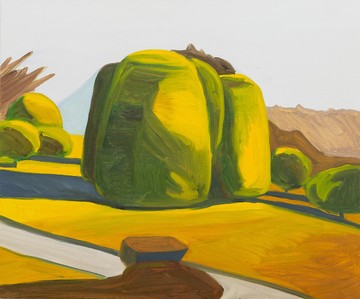
oil on canvas, 60.6 x 72.7 cm

oil on canvas, 112 x 194 cm
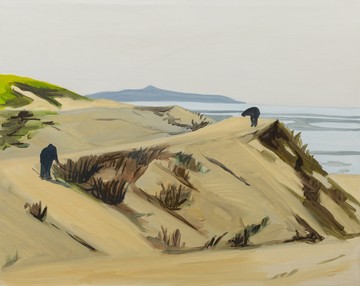
oil on canvas, 72.7 x 91 cm
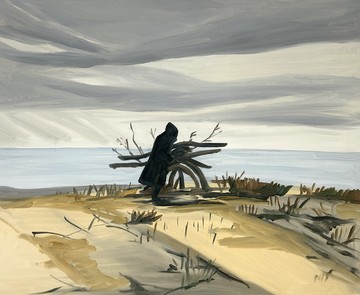
oil on canvas, 72.7 x 91 cm
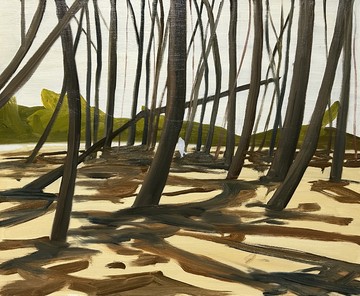
oil on canvas, 50 x 60.6 cm

